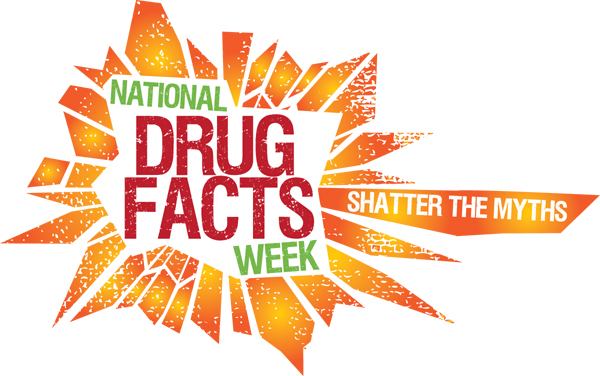The GREAT Academy joins the nation in educating our student base, about National Drug Facts Week for teens that aims to shatter the myths about drugs and drug abuse. Through community-based events and activities on the Web, on TV, and through contests, NIDA is working to encourage teens to get factual answers from scientific experts about drugs and drug abuse.
Illicit Drug Use
Illicit drug use among teenagers re-mains high, largely due to increasing popularity of marijuana. Marijuana use by adolescents declined from the late 1990s until the mid-to-late 2000s, but has been on the increase since then. In 2013, 7.0 percent of 8th graders, 18.0 percent of 10th graders, and 22.7 percent of 12th graders used marijuana in the past month, up from 5.8 percent, 13.8 percent, and 19.4 percent in 2008. Daily use has also increased; 6.5 percent of 12th graders now use marijuana every day, compared to 5 percent in the mid-2000s.
Rising marijuana use reflects changing perceptions and attitudes.Historically, as perception of risks goes down, use goes up (and vice versa). Young people are showing less disapproval of marijuana use and decreased perception that marijuana is dangerous. The growing perception of marijuana as a safe drug may reflect recent public discussions over “medical marijuana” and movements to legalize the drug for adult recreational use in some states.
New synthetic drugs are a cause for concern, but their use is not increasing. Synthetic marijuana (also known as Spice or K2)—referring to herbal mixtures laced with synthetic chemicals similar to THC, the main active ingredient in marijuana—was added to the MTF survey in 2011, when 11.4 percent of high school seniors reported using it in the past year; in 2013, it had dropped to 7.9 percent. These mixtures could be obtained legally until 2012 and are still wrongly perceived as a safe alternative to marijuana. The synthetic stimulants known as “bath salts” were added to the survey in 2012; in 2013, just 0.9 percent of seniors had used these drugs in the past year.
Nonmedical use of prescription and over-the-counter medicines remains a significant part of the teen drug problem. In 2013, 15.0 percent of high-school seniors used a prescription drug non-medically in the past year. The survey shows continued abuse of Adderall, commonly used to treat attention deficit hyperactivity disorder, or ADHD, with 7.4 percent of seniors reporting taking it for non-medical reasons in the past year. However, only 2.3 percent of seniors re-port abuse of Ritalin, another ADHD medication. Abuse of the opioid pain reliever Vicodin has shown a marked decrease in the last 10 years, now measured at 5.3 percent for high school seniors, compared to 10.5 percent in 2003. In addition, 5 percent of seniors report abuse of cough products containing dextromethorphan, down from 6.9 percent in 2006, the first year it was measured by the survey.
Positive trends in the past several years include reduced use of inhalants and less use of cocaine, especially crack cocaine. Past-year inhalant use by younger teens continued a downward trend in 2013, with 5.2 percent of 8th graders and 3.5 percent of 10th graders reporting use. Five-year trends of past-year cocaine use across all grades showed a drop as well. Other drugs, such as heroin, methamphetamine, ecstasy (MDMA) and hallucinogens, are holding fairly steady.
Alcohol
Alcohol use among teens remains at historically low levels. In 2013, 3.5 percent of 8th graders, 12.8 percent of 10th graders, and 26 percent of 12th graders reported getting drunk in the past month, continuing a downward trend from previous years. Significant declines include sharp drops from previous years in daily alcohol use by 10th and 12th graders (0.9 percent and 2.2 percent, respectively, in 2013). In 2013, 22.1 percent of high school seniors reported binge drinking (defined as 5 or more drinks in a row in the past 2 weeks)—a drop of almost one-third since the late 1990s.
Tobacco
Fewer teens smoke cigarettes than smoke marijuana. Cigarette smoking by high school students peaked in 1996–1997 and has declined continuously since then. In 2013, 9.6 percent of students surveyed by MTF were current (past-month) cigarette smokers—the lowest teen smoking has been in the history of the survey. By comparison, 15.6 percent were current marijuana smokers.
Other forms of smoked tobacco are becoming popular, however. The use of hookah water pipes and small cigars has raised public health concerns and has recently been added to the MTF survey. In 2013, 21.4 percent of 12th graders had smoked a hookah at some point in the past year, an increase from 18.3 percent in 2012, and 20.4 percent had smoked a small cigar.
Other forms of smoked tobacco are remain popular, however. The use of hookah water pipes and small cigars has raised public health concerns and has recently been added to the MTF survey. In 2012, 18.3 percent of 12th graders had smoked a hookah in the past year, and 19.9 percent had smoked a small cigar.






